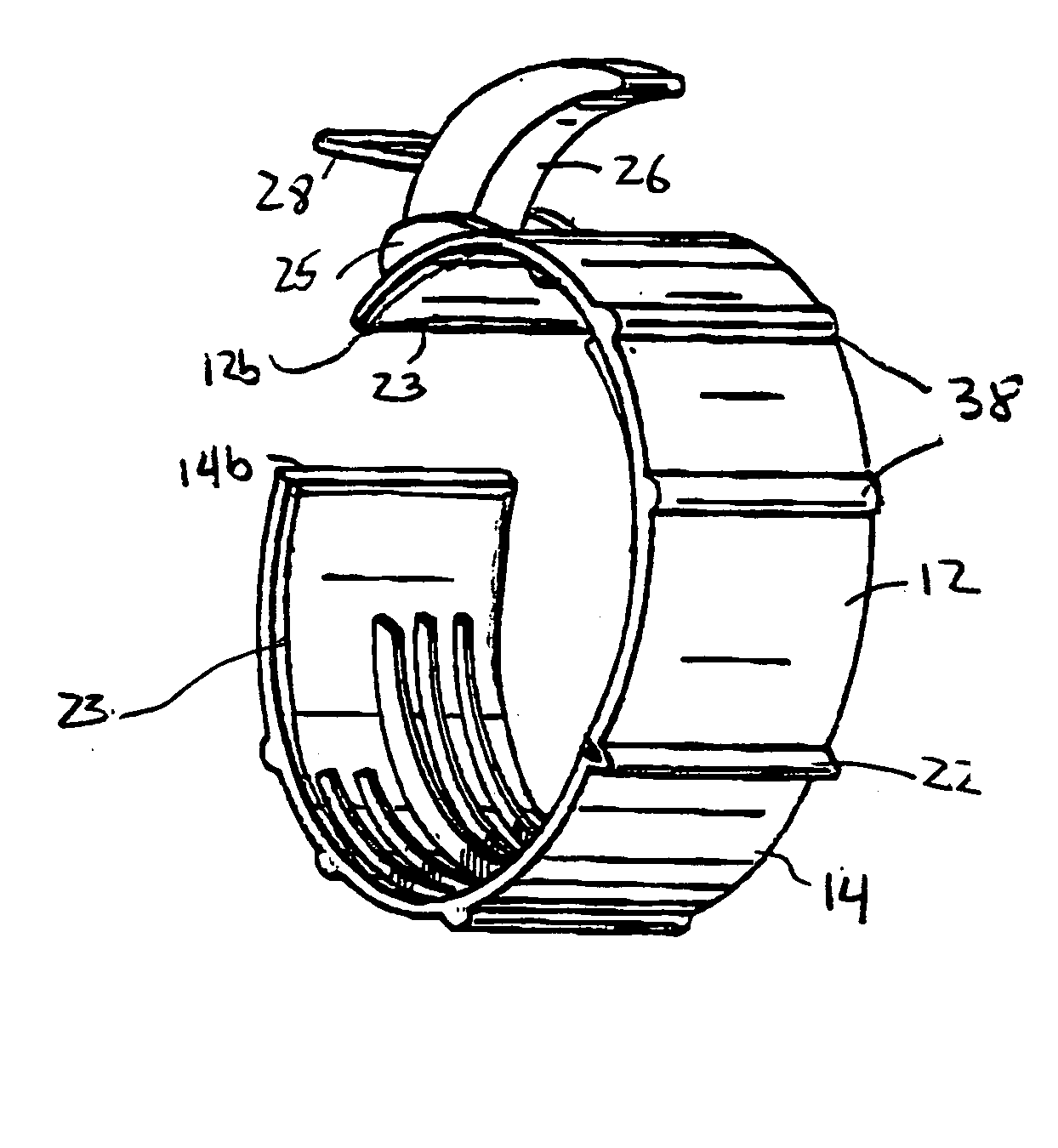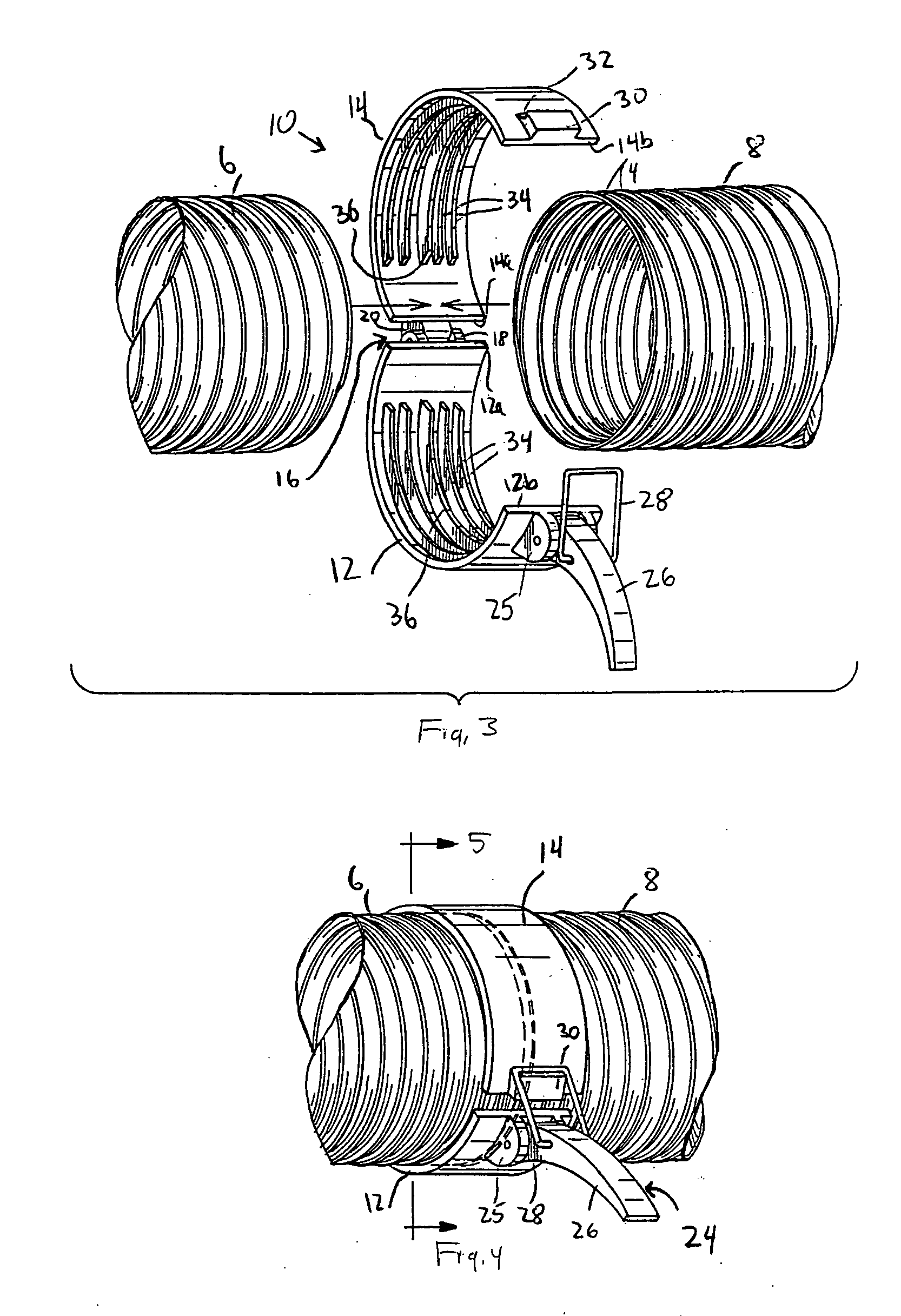Quick-connect/quick-disconnect conduit connectors
a technology of quick-connect and connector, which is applied in the direction of sleeve/socket joint, laundry drier, textiles and paper, etc., can solve the problems of difficult use of clamp types, inability to align screwdrivers with machine screws, and difficulty in sliding conduit onto the pipe to allow secure clamping, etc., to achieve easy and quick detachable, fast and secure means, and simple economic
- Summary
- Abstract
- Description
- Claims
- Application Information
AI Technical Summary
Benefits of technology
Problems solved by technology
Method used
Image
Examples
first embodiment
[0049] Referring to the accompanying drawings wherein like reference numerals refer to the same or similar elements, a connector for connecting a pair of conduits in accordance with the invention is designated generally as 10. The connector 10 includes a pair of generally semi-cylindrical members 12, 14 rotatably connected together at a first, coupled edge 12a, 14a and separable from one another at a second, free edge 12b, 14b. In this manner, the semi-cylindrical members 12, 14 have an open position in which the second edges 12b, 14b are separated from one another (as shown in FIG. 3) and a closed position in which the second edges 12b, 14b are adjacent one another (as shown in FIG. 5).
[0050] In the embodiment shown in FIG. 3, the semi-cylindrical members 12, 14 are connected together by a hinge 16 (i.e., connected at the first edges 12a, 14a). Hinge 16 may have any known structure in the art, for example, a first part 18 defining a pivot axis arranged on or integrally formed in co...
second embodiment
[0086] Referring now to FIGS. 9, 9A and 10, a connector for connecting two conduits 6, 8 together, in particular conduits having different diameters, is designated generally as 62. The connector 62 includes a pair of generally semi-cylindrical members 64, 66 rotatably connected together at a first, coupled edge 64a, 66a and separable from one another at a second, free edge 64b, 66b. The semi-cylindrical members 64, 66 thus have an open position in which the second edges 64b, 66b are separated from one another (as shown in FIG. 9) and a closed position in which the second edges 64b, 66b are adjacent one another (as shown in FIG. 10).
[0087] The semi-cylindrical member 64 includes a first engagement portion 68 adapted to engage with the smaller conduit 6 and a second engagement portion 70 adapted to engage with the larger conduit 8. An arcuate lip 72 is formed between the engagement portions 68, 70 and is perpendicular to an axis passing through the connector 62. Similarly, the semi-cy...
PUM
 Login to View More
Login to View More Abstract
Description
Claims
Application Information
 Login to View More
Login to View More - R&D
- Intellectual Property
- Life Sciences
- Materials
- Tech Scout
- Unparalleled Data Quality
- Higher Quality Content
- 60% Fewer Hallucinations
Browse by: Latest US Patents, China's latest patents, Technical Efficacy Thesaurus, Application Domain, Technology Topic, Popular Technical Reports.
© 2025 PatSnap. All rights reserved.Legal|Privacy policy|Modern Slavery Act Transparency Statement|Sitemap|About US| Contact US: help@patsnap.com



